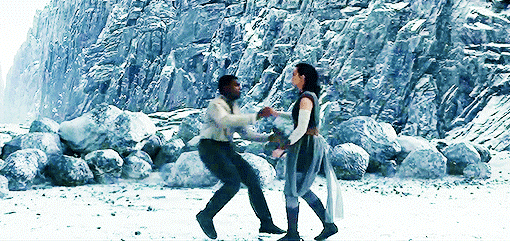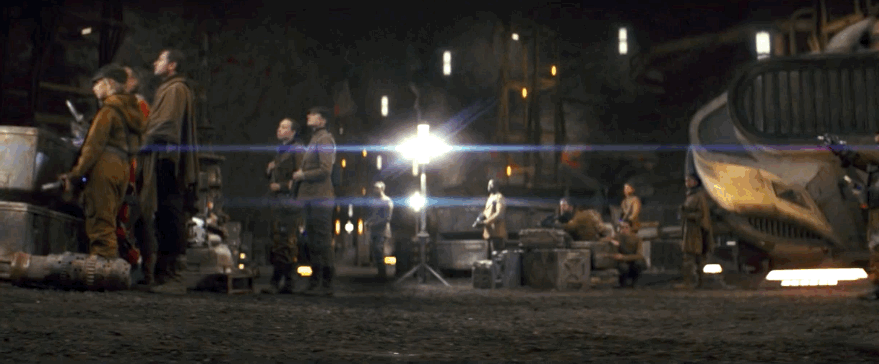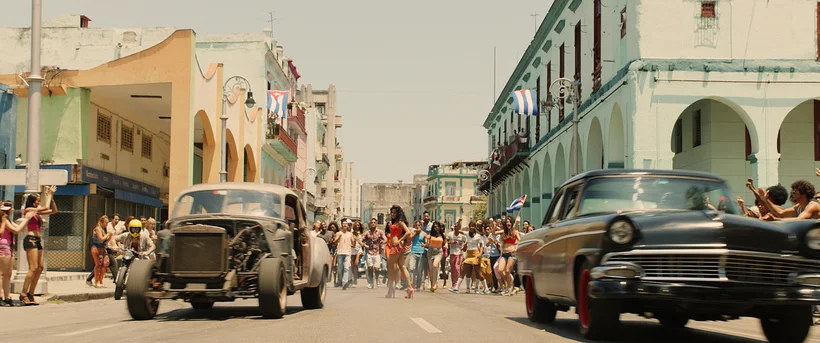[Author’s Note: An earlier version of this article appeared on Syfy.com in 2017]
Ho, ho, h’oh god, no! Along with the jolly elves and perky gingerbread men, there are also monsters in Christmastime lore, and pop culture, that should fill you with more than a stocking-full of fear.
The spooky Christmas story is automatically associated with Charles Dickens’ 1843 novella A Christmas Carol, but the journalist-turned-novelist couldn’t take credit for creating the gimmick (although Chuck can largely have it for reminding people of traditions of yore, and rebooting the holiday in the early Victorian era as a secular, charitable observance). Dickens was a fan of Washington Irving, who -- in “Old Christmas” from The Sketch Book of Geoffrey Crayon, Gent. -- wrote of trading a “goblin tale” and stories of ghosts and fairies around the fire after “The Christmas Dinner” back in 1820.
Yet the tradition of imbuing the wintertime with elements of horror goes back at least more than 250 years prior. In 1589, Christopher Marlowe wrote of the season’s tales of “spirits and ghosts” in The Jew of Malta. Meanwhile, Shakespeare spoke of a sad story best for winter, “of sprites and goblins” in 1623’s The Winter’s Tale.
But winter’s connection to monsters goes back still further -- and is not particularly surprising considering the longest night of the year in the Northern Hemisphere (when the veil between worlds is presumably pretty thin – all due respect to October’s Samhain) takes place around December 21. That places it in close proximity to Christmas, of course.
Even our concept of the benevolent seasonal mascot Santa Claus can be traced back to Old Norse, and Germanic Pagan, observations of the Wild Hunt or, later, Yule, when the long-bearded Odin would lead a band of hunters, not reindeer, across the sky. That band consisted of either fairies or armies of the dead.
In modern times, the tradition of the scary Christmas story continues in England (though the English cooled on the trend during the early-to-mid war-torn 20th century – at least until the 1970s annual TV tradition A Ghost Story for Christmas). And while they pale in number compared to Halloween time, there are still some holiday horror tales in the States.
The concept isn’t just relegated to the relatively new, 40-year-old holiday horror movie subgenre, either. Just look to the American classic “It’s The Most Wonderful Time of the Year” as an example. Written by two New York City kids, Edward Pola and George Wyle, and sung by Iowa’s own Andy Williams, the 1963 tune tells of “scary ghost stories” right up there with “caroling out in the snow” as part of the Christmas tradition.
With that in mind, join me as I share my favorite creatures from fiction and folklore that put the “Eee!” in “Season Greetings” and the “Ahhh!” in “Merry Christmas.”
The winged things
“The Festival” (1925)
By H.P. Lovecraft
A man travels to his ancestral home in Kingsport, Mass., during Christmastime and encounters “cowled, cloaked figures” engaged in a Yuletide ceremony in passageways beneath an old church. Then something “amorphously squatted” plays a flute that summons “a horde of tame, trained, hybrid winged things”:
"They were not altogether crows, nor moles, nor buzzards, nor ants, nor vampire bats, nor decomposed human beings … They flopped limply along, half with their webbed feet and half with their membranous wings; and as they reached the throng of celebrants the cowled figures seized and mounted them, and rode off one by one along the reaches of that unlighted river.”
Aside from his horribly racist and xenophobic ways, H.P. knew the sauce of fear, and channels it perfectly in this less than cheery Necronomicon short story.
Santa and his elves
Rare Exports: A Christmas Tale (2010)
Written and directed by Jalmari Helander
Rare Exports is a horror film that serves as a parody and, as Roger Ebert wrote, is “an R-rated Santa Claus origin story crossed with The Thing.” Set in real-life Lapland, Finland, an area long associated as the home of Father Christmas, the movie explores what may happen when irresponsible drilling unearths a burial mound meant to contain a less-than-jolly beast. Children go missing, nasty elves (who are naked old men) go on the rampage, and an enormous horned Santa is about to defrost. This is a parody that doesn’t show its cards until the end, and maintains a fantasy-horror vibe that will freak the eggnog out of you.
The raven
“The Raven” (1845)
By Edgar Allan Poe
The narrator is kicking back during a dreary night in “bleak December,” minding his own business, reading old lore and trying to forget about his dead lover, Lenore. Then a talking bird comes in and starts mock-mock-mocking him with the same response to his every question. As the narrator descends into madness, the “fowl whose fiery eyes now burned into my bosom’s core” seemingly traps the man’s soul underneath its shadow. The “thing of evil” simply stares, squawks, and does the work of a devil prophet with only one word: “Nevermore.”
Gremlins
Gremlins (1984)
Directed by Joe Dante, written by Chris Columbus
The transformative power of Christmas works in reverse in this modern comedy-horror classic. When Billy’s exotic pet mogwai Gizmo gets wet, then multiplies into multiple deceitful cuties, who then feed after midnight, they become the bipedal reptilian murder machines known as Gremlins. The monsters are ruthless in this dark comedy, which, along with Indiana Jones and the Temple of Doom, motivated the MPAA to create the PG-13 rating. Also, it’s creepy to think that the Gremlins design was partially inspired by the supposedly real-life Kelly-Hopkinsville goblin/UFO case of 1955. Oh yeah, and this is the movie where we learn the dangers of playing Santa and crawling down a chimney.
Kallikantzaros
Possibly late 14th century; Southeastern European folklore
So here’s the deal: In many folk myths there is a world tree, or tree of life, that grows through the earth, supports the heavens, and connects to roots in the underworld. It is pretty important, and yet there are a bunch of goblins – known collectively as the kallikantzaroi – who hang out underground trying to saw down the tree and make the world collapse. They’re not cool. During the 12 Days of Christmas, they forget about their job and emerge on the surface world to stir up things and generally wreak havoc until Epiphany.
In his study of Early Modern Europe folklore, Ecstasies: Deciphering the Witches' Sabbath, historian Carl Ginzburg described the appearance of a Kallikantzaros as:
“Monstrous beings, black, hairy, sometimes gigantic, sometimes very small, usually equipped with animal-like limbs: donkey’s ears, goatish paws, equine hooves … they are invariably males, provided with enormous sexual organs.”
Yikes! And what’s worse, if you’re a child born during the 12 Days, you run the risk of being transformed into one of these Christmas goblins.
Smee
Someone in the Room (Supernatural and Occult Fiction) (1931)
By Alfred Burrage
What could go wrong when a group of twentysomethings want to play hide-and-seek on Christmas Eve?
Perhaps nothing, but as the narrator relays the story of a game of “Smee,” a variation on the classic hiding game, it’s best always to count how many people are in your party. As he and 12 (or was it 13?) of his mates play in the house where a girl died 10 years prior, he comes upon someone hiding in the darkness:
“The feeling of something wrong, something unnatural was growing. I remembered touching her arm, and I trembled with horror.”
Krampus
Possibly pre-Christian era; Germanic, and Eastern European folklore
Krampus is the anti-Claus, the counterpart to St. Nick. A companion of Santa’s, the Krampus is a hairy goat-like demon with horns and cloven hooves (or one hoof and one human foot) who punishes the “naughty” children. Emerging from pre-Christian Germanic folklore, he carries chains, birch sticks or whips to beat children with, and he may dish out coal, depending on the culture. But if he’s in a bad mood, he’ll stuff children in his sack or bathtub and carry them to hell for cooking. Krampus night is typically celebrated Dec. 5 in Europe, aka Krampusnacht, where people celebrate by dressing as the beast and roam the streets drinking schnapps.
You may have seen the very good 2015 horror-comedy Krampus by director Michael Dougherty, but I’d also recommend the book Krampus: The Yule Lord by Brom. The book mashes up Norse, Germanic, pagan, and Christian myths to tell a tale about this mischievous god who seeks revenge against Santa.
John Turk’s ghost
“The Kit-Bag” (1908)
By Algernon Blackwood
After 10 days spent working with the defense on the trial of John Turk -- a murderer who cut up his victim in tiny pieces, but is found not guilty due to insanity -- Johnson plans to escape for a Christmas vacation. All he needs is a kit-bag, or duffel bag, which his lawyer boss plans to loan him. After receiving the bag (“a stout canvas kit-bag, sackshaped, with holes round the neck for the brass bar and padlock”), Johnson begins to hear things in his home, and see movement.
He believes he’s simply obsessing over the murder cases until he encounters “the white skin, the evil eyes, and the fringe of black hair low over the forehead” of Turk.
And from within the bag itself, “he saw a head and face slowly sinking down out of sight as though someone were crouching behind it to hide, and at the same moment a sound like a long-drawn sigh was distinctly audible in the still air about him.” And on top? A smear of crimson.
Perhaps the bag is more than a spacious duffel for Johnson, after all?
The Ghost of Christmas Yet to Come
“A Christmas Carol” (1843)
By Charles Dickens
“It was shrouded in a deep black garment, which concealed its head, its face, its form, and left nothing of it visible save one outstretched hand. But for this it would have been difficult to detach its figure from the night, and separate it from the darkness by which it was surrounded.”
The Ghost of Christmas Yet to Come is perhaps the most famous ghost of Christmas tales, as well as simply one of the most famous ghosts in fiction. The phantom spirit never speaks, but only points as it fills Ebenezer Scrooge with a “vague, uncertain horror.” Aside from its resemblance to Death itself, the spirit is especially terrifying because it reminds us all of the uncertainty of our own futures, and the reckoning we fear for past actions – and even of the existential dread that perhaps we don’t matter in the larger scheme, and no one will mourn our death.
Yeah, it’s weighty stuff.
Popular culture has given us various takes on this specter. The Bill Murray-starring/Richard Donner-directed Scrooged presents one of the more memorable versions, with the ghost’s oversized skull-face and damned souls hiding in its robes. And he can sneak in through the TV.
The especially cruel cigar-smoking, red-tinged Pete from Mickey’s Christmas Carol deserves a mention, since he terrified me as a kid when he knocked Ebenezer/Scrooge McDuck into the flames beneath his grave, mocking him as the “richest man in the cemetery.”



















